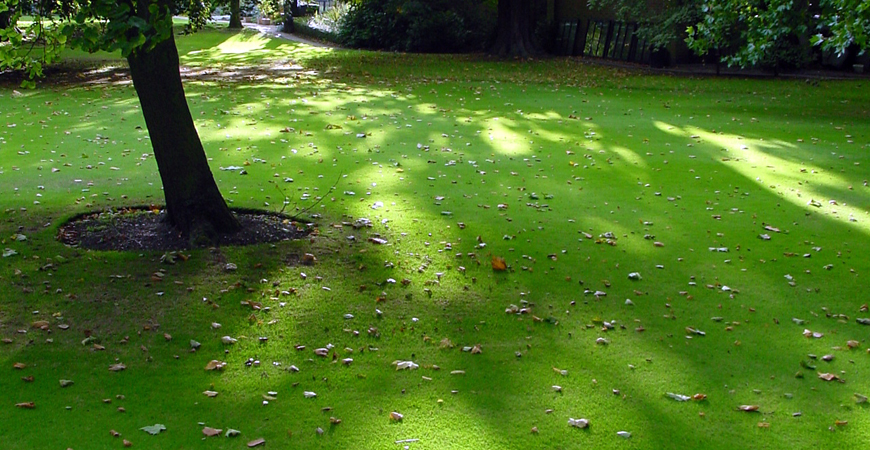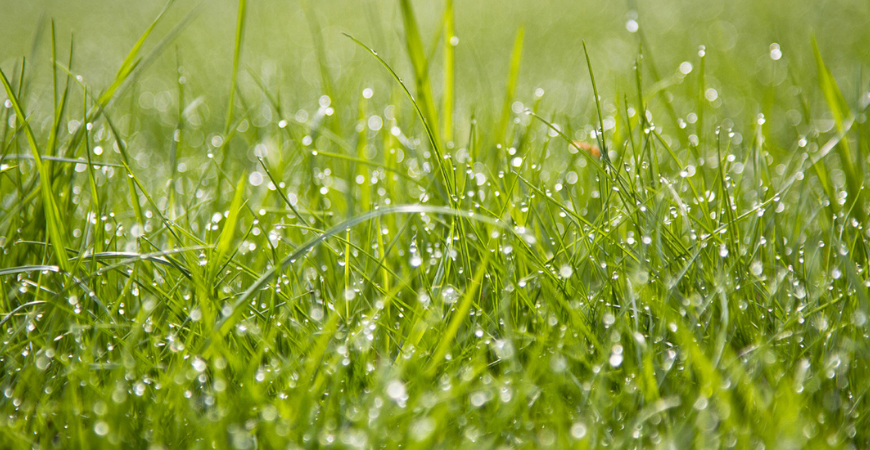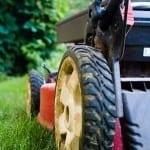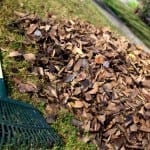
Best Tips for Planting Grass Seed in Fall
Overseeding involves planting grass seed over an existing lawn to improve it. Reseeding a lawn will restore thin or bare patches.
Here we cover planting grass seed in fall.
When should I plant grass seed?
The answer will depend on where you live, but mid-August to late September is usually the best time to seed your lawn. By this time, most lawn care chores are completed; mowing and watering have ceased, the hoses are drained and stored, and the last fertilizer application has been applied.
What variety of grass seeds should I use?
When choosing grass seed, select a seed or seed mix that is best for your climate, the planting location, and the maintenance required. Mixing seed types is a common practice to boost the overall green appearance of your lawn.
Achieving a lush, healthy lawn takes time and diligence, but success also depends on the variety of grass you choose. Grass seed is divided into two types; warm-season and cool-season grasses.
Whether you are starting a new lawn or maintaining an existing one, it’s important to match the grass seed to your growing region.
- Cool-season grasses grow well in northern regions as they usually experience a cool spring and autumn and moderately warm summer.
- Warm-season grasses flourish in southern regions where summer temperatures can be high. Warm-season grasses can withstand the summer heat with proper watering.

What are the 4 main varieties of lawn grasses in the U.S?
Kentucky Bluegrasses (Poa pratensis):
A popular lawn grass in the northeast, bluegrass is attractive, hardy, and popular for its adaptability and pleasing color and texture. New varieties are somewhat tolerant to shade and offer improved disease resistance.
Kentucky bluegrasses thrive in well-drained, moderate soils but grow slowly from seed. However, spring germination is difficult, so seeding this variety is best done in fall.
Tall Fescues (Festuca arundinacea):
A coarser grass variety, tall fescues prefer well-drained soil and will tolerate low-nutrient soils. Tall fescues grow and establish quickly from seed.
They are also drought-tolerant and can withstand foot traffic. New varieties with improved leaf color and texture are available.
Fine Fescues (Festuca spp.):
Made up of several types of grass (sheep, hard, and creeping red), fine fescues are popular due to their tolerance of shade and infertile soils. Fine fescues aren’t the best choice for areas near a walkway as the fine blades do not stand up to foot traffic.
Newer varieties provide a lower-maintenance turfgrass option.
Perennial Ryegrass (Lolium perenne):
Newer varieties of perennial ryegrass show improvement in color and texture over old varieties. It grows well in a variety of soils but grows poorly in constantly wet or soggy locations.
This variety has moderate tolerance to shade and germinates rapidly.
How should I prepare the soil?
Follow these 3 steps before seeding:
1. Test the soil
Contact your local County Cooperative Extension Office to get a soil testing kit and have a soil sample tested. The test results will provide an accurate picture of the nutrients and amount of time required for your soil.
2. Apply Lime
Lime helps the grass seed to germinate. Apply the recommended amounts of fertilizer and lime indicated by your test results.
It also boosts the effectiveness of fertilizer and organic nutrients.
Scatter the lime and fertilizer evenly over the soil and dig it to a depth of 4 to 6 inches deep with a rototiller or shovel and rake. If you need more than 200 pounds per 1000 square feet of lime, apply one-half of the recommended amount, turn it in, and then apply the remainder, thoroughly blending it in.
3. Add soil amendments
If you have sandy or clay soil, add organic matter to the top 2 to 4 inches. This will improve the soil’s texture and its ability to hold water.
Apply peat moss at 1 to 2 cubic yards per 1000 square feet. Other preferred amendments include leaf compost and well-rotted manure.
For large yards or areas that are too difficult to amend, choose a grass best suited for your soil’s specific conditions.
What is the best way to plant grass seed?
Once the soil or seedbed is prepared, determine the depth you need to plant the seed. Usually, a depth of 1/4-inch will do the trick.
If you want even coverage, use a drop or rotary spreader to cast the seed. Moreover, you need to run the spreader in two directions – applying one-half the amount in one direction and the remaining amount in the other.
Rent a lawn roller to press the grass seeds into the soil. A lawn roller improves seed-to-soil contact for proper seed germination.
However, if you’re planting grass in a small area, grass seeds can be tossed evenly by hand.

How often should I water the seed?
Keep a newly planted lawn moist to the top 2 inches of soil either through irrigation or with the help of fall rain showers. Poor or hit-and-miss growth may result if the top layer dries out before the seeds establish healthy roots.
Occasional drying is acceptable. However, until the seeds germinate, the lawn should be well watered.
When the seed has developed a strong root system, watering can be done less often. Irrigate less often but more deeply (3 to 5 inches). Check the drier areas of the lawn for signs of wilting. Irrigate the area if needed for successful seed establishment.
Should I mulch the seed?
Home repair expert, Danny Lipford, says, “When seeding new lawns, it’s generally recommended that a thin layer of mulch be scattered on top. That mulch really only has one purpose – to hold in the moisture to keep the seeds from drying out.”
What kind of mulch should I use?
- Aged pine straw
- Commercial lawn mulch: a biodegradable seed mat or a bagged combination of mulch and fertilizer.
- Compost
- Peatmoss
- Sawdust
- Wheat, barley, or oat straw
Planting grass seed in fall is an end-of-season project which will repair a bare lawn or thicken a sparse one. By planting grass seeds in the fall, you’ll enjoy the beauty of a lush, green lawn come spring!











